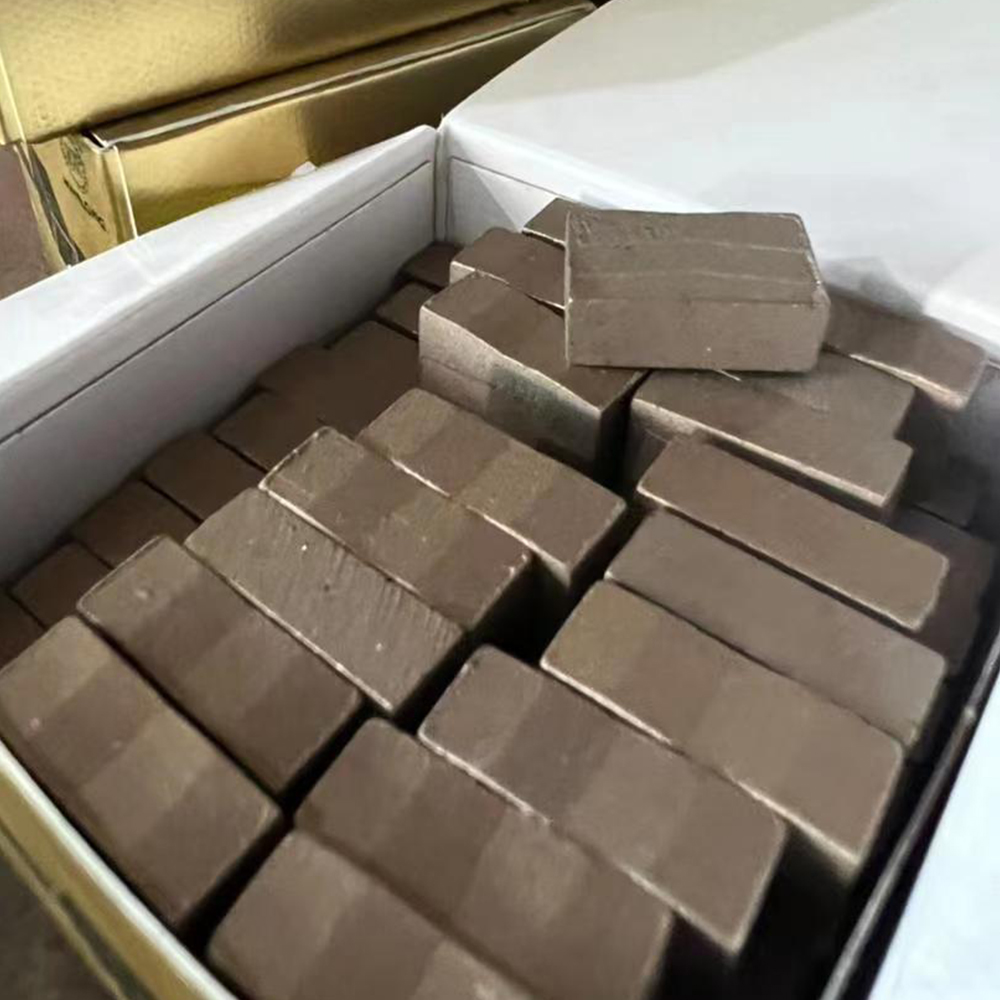1. Sintering Process Selection:
As the temperature increases, the matrix densifies and its flexural strength increases accordingly. Furthermore, as the holding time increases, the flexural strength of the blank matrix and diamond segments initially increases and then decreases. Sintering at 800°C for 120 seconds can be used to meet performance requirements.
2. Strength Selection:
Excessive strength will make the crystal difficult to break, causing the abrasive grains to be polished during use, reducing sharpness and deteriorating tool performance. Insufficient diamond strength will easily break upon impact, making it difficult to withstand heavy cutting loads. Therefore, a strength of 130-140N should be selected.
3. Grit Selection:
Coarse diamond grit with a single grit size results in sharp saw segments and high cutting efficiency, but the flexural strength of the diamond agglomerate decreases. Fine diamond grit or a mixture of coarse and fine grit results in high durability but low efficiency. A diamond grit size of 50/60 mesh is suitable.

4. Binder Selection:
For marble, a soft material, the mechanical properties of the diamond segment are relatively low, so a copper-based binder can be used. However, copper-based binders have a low sintering temperature, resulting in lower strength and hardness, but higher toughness, resulting in a weak bond with diamond. When adding tungsten carbide (WC), WC or W2C serves as the skeleton metal, with an appropriate amount of cobalt to enhance strength, hardness, and bonding properties. Small amounts of metals with low melting points and low hardness, such as Cu, Sn, and Zn, are added as the binder. The particle size of the main additive should be finer than 200 mesh, and the particle size of the additional additives should be finer than 300 mesh.
5. Diamond Distribution Concentration Selection:
As the diamond concentration increases from low to high, the saw blade’s sharpness and cutting efficiency gradually decrease, while its service life gradually increases. However, excessively high concentrations can cause the saw blade to dull. Using a low concentration and coarse particle size improves efficiency. By utilizing the different functions of different parts of the segment during sawing, different concentrations are adopted (i.e. a lower concentration in the middle can be used in three or more layers). During the sawing process, a middle groove is formed on the segment, which is helpful to prevent the saw blade from swinging.
 WANLONG
WANLONG
